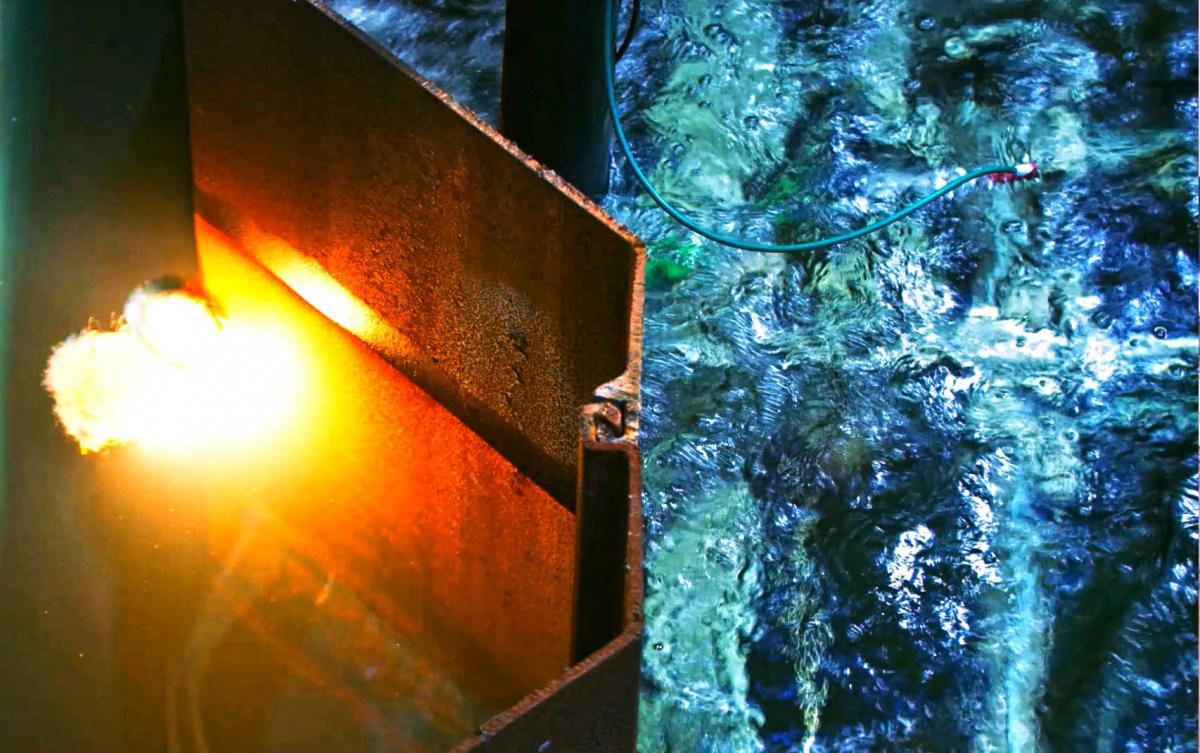Scientists of the Laser Zentrum Hannover’s (LZH) Underwater Technology Group are working together with the Leibniz University of Hanover Institute of Materials Science to develop a laser-based, automated process for cutting sheet piling under water.

Laser cutting of sheet piling under water. (Credit: LZH)
Metal sheet piling protects fortified shore areas, and can be used to dry out these areas if repairs are necessary. Should it need to be dismantled, divers are currently required to cut the walls into smaller pieces using a manual cutting torch underwater. This can normally be done at a rate of approximately 20 metres a day (0.07 metres per minute), however, as part of the ‘Laser cutting under Water for high Productivity’ (LuWaPro) project, the LZH has now developed an automated process that uses a disc laser to provide cutting speeds of 0.9 metres per minute. The new process means that divers will now only have to carry out a supervisory role.
The LZH scientists achieved a position tolerance of about two millimetres using the new process, enabling the system to react robustly to possible impacts during underwater operation.
A further advantage over using a manual cutting torch is the potential to monitor the automated process, as sensors could be used to determine whether a cut has been completed or not. This would be a considerable benefit as, currently, divers often cannot see due to poor visibility.
The process was tested under two scenarios: cutting standalone metal sheets underwater; and backfilling metal sheets with concrete. In the second scenario, a leaking of the molten material through the cutting kerf was achieved by tilting the laser head at an angle of 20 degrees. Safety was guaranteed throughout both scenarios by using conventional safety goggles underneath the diver’s headgear.
The project was supported by Germany’s Federal Ministry for Economic Affairs and Energy.

